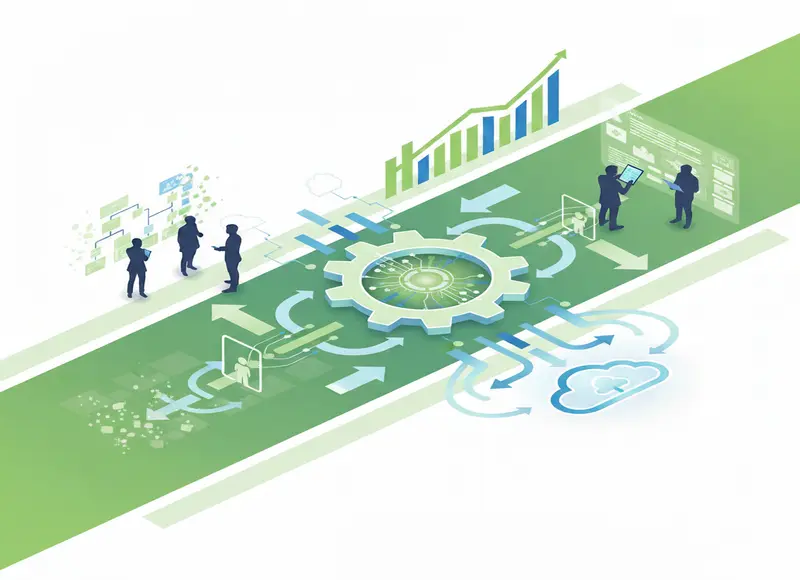Table of Contents
Explore the ways in which technology is transforming the hard money loan industry and how it is changing the lending landscape. Stay informed with this comprehensive guide.

Technology has invaded every aspect of our lives in recent years, transforming industries and revolutionizing business structures. The financial sector, in particular, has undergone extraordinary change as new technologies break down boundaries and open up new opportunities. The hard money loan industry, a significant component of the alternative lending market, is one of the industries going through this critical change.
Historically recognized for its reliance on traditional underwriting processes and limited accessibility, the hard money lending sector has seen a remarkable transformation, aided by rapid technological innovation. On the other hand, the future of hard money lending promises intriguing potential for both borrowers and lenders. The convergence of financial services and cutting-edge technologies has expedited operations and democratized access to money for a broader range of borrowers.
This essay sheds light on how technology is changing the landscape of hard money loans and what the future holds for investors, borrowers, and lenders in this dynamic and developing field. Let's go.
What is a Hard Money Loan?
A hard money loan is an asset-based, short-term financing often used in real estate transactions. Hard money loans, as opposed to traditional bank loans, are sponsored by private individuals or businesses known as "hard money lenders." These loans are typically sought by real estate investors, property developers, or individuals seeking immediate cash for projects that may not qualify for conventional financing due to their unique circumstances or high-risk nature. Investing with poor credit is possible with Maryland hard money loans.
A hard money loan is distinguished because it is secured by a physical asset, usually real estate, which serves as collateral for the loan. The value of the collateral is an essential component in deciding the loan amount because hard money lenders are more concerned with the property's value than the borrower's creditworthiness or financial history.
Hard money loans often have higher interest rates than standard bank loans due to their short-term nature. However, they provide a faster and more flexible finance solution for borrowers that require immediate funds or have time-sensitive projects.
These loan approval processes are often faster and less demanding than conventional ones, making them a feasible choice for borrowers with urgent funding needs or those who may not qualify for regular financing owing to credit concerns or other factors.
Role of Artificial Intelligence (AI) in Creditworthiness Assessment
The involvement of Artificial Intelligence (AI) in creditworthiness assessment has drastically revolutionized the traditional lending process, revolutionizing how lenders assess the creditworthiness of borrowers. AI-powered algorithms and data analytics have resulted in some significant developments and benefits in this domain:
1. Enhanced Accuracy
Artificial intelligence (AI) plays a critical role in creditworthiness assessment by dramatically improving accuracy. AI-powered algorithms use massive datasets and complex analytics to uncover hidden patterns and trends, resulting in a more thorough and exact evaluation of borrowers' credit risks.
AI-driven hard money lending software helps lenders make better-informed judgments by minimizing human biases and analyzing significant real-time data, resulting in a more accurate evaluation of borrowers' creditworthiness.
2. Risk Mitigation
AI is essential for reducing risk in the evaluation of creditworthiness. AI-powered algorithms analyze large datasets and trends to estimate borrower credit risk accurately. Lenders can reduce possible losses and maintain a healthier loan portfolio by implementing suitable risk mitigation methods for high-risk borrowers, lowering prospective losses.
AI's capacity for continuous learning ensures that credit assessment models are kept current, allowing lenders to adapt to shifting economic trends and borrower behaviors. This technology promotes a more secure lending environment by protecting lenders and borrowers from fraudulent activity and improving overall risk management procedures.
3. Fraud Detection
Artificial intelligence (AI) plays a crucial role in creditworthiness assessment by analyzing enormous volumes of data from multiple sources, enabling quicker, more accurate risk projections and fairer loan approvals. AI-driven algorithms make it possible to create personalized credit solutions, improving risk management and the borrower experience. Advanced analytics powered by AI is used in fraud detection to examine patterns and abnormalities in data to help lenders spot possible fraud and safeguard both lenders and borrowers against it.
AI is an essential instrument for preserving the security and integrity of the lending process since it is constantly learning and adapting to the most recent fraud prevention techniques.
Potential Competition from Growing Investor Interest in Hard Money Lending
As the curiosity of investors in hard money lending grows, possible sector competition is likely to heat up. Increased demand for hard money loans may entice additional lenders, established financial institutions, and emerging players looking to profit from the profitable business. As lenders compete for borrowers' interest, the surge in competition may pressure interest rates and loan terms.
Furthermore, technological improvements and the growth of online platforms may lessen obstacles to entry, allowing smaller businesses to compete in the industry. These characteristics can result in a broader choice of loan options for consumers. Still, they also require lenders to find novel ways to differentiate their offers to stay profitable.
Furthermore, legislative changes or economic turmoil can affect the industry's factors, altering the degree of competition and the general health of the hard money lending sector. Lenders must remain agile and flexible to successfully maneuver possible hurdles while preserving an advantage in this shifting context.
Conclusion
Technology has profoundly impacted the hard money lending industry, ushering in an era of efficiency, accessibility, and creativity. Technological advancement has transformed how investors, borrowers, and lenders interact in this dynamic sector, from streamlined processes and data-driven credit assessments to democratized access and online marketplaces. Adopting AI, data analytics, and automation has not only sped up loan approvals but also created a more equitable and inclusive lending ecosystem.
As the industry evolves, stakeholders must stay watchful, employing technology responsibly to maximize its benefits while mitigating risks. With technology serving as a catalyst, the hard money loan business is well-positioned to traverse the future with resilience, fulfilling the diversified financial demands of borrowers and generating new opportunities for investors in the ever-changing real estate landscape.









